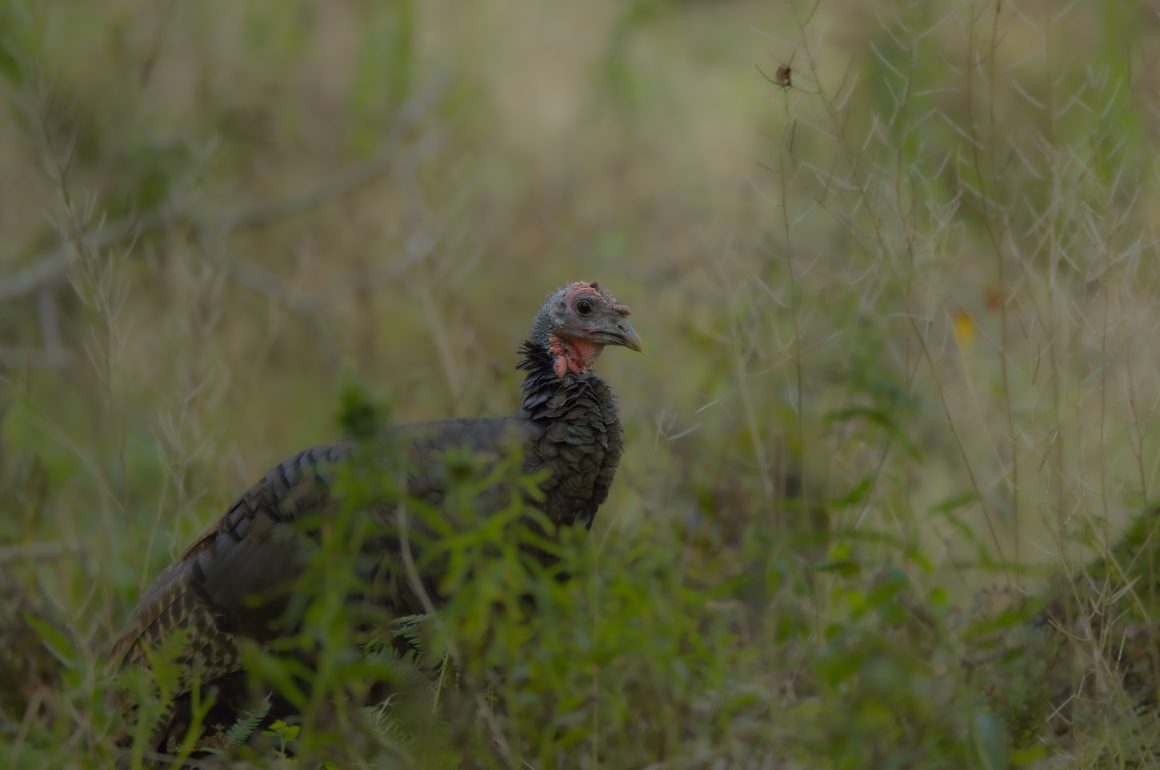
In my less than four years of birding and bird photography, I’ve had the privilege of traveling to six countries for birding, each offering unique opportunities to observe and photograph incredible avian life. My latest adventure took me to Ontario, Canada, home of 10000birds’ very own writer Leslie Kinrys, and one of the best birding locations I have been to in terms of ease of finding birds.
Upon learning that I’d be birding in Ontario, Leslie graciously invited my wife and I to join her and her husband, Mike, for a day of birding. And what a wonderful day it was!
After arriving at our hotel around 2:30 a.m. from an overnight flight, we were up and ready by 10 a.m. on “day 1”, to meet Leslie and Mike. Despite the lack of sleep, the excitement for birding took over. Leslie’s enthusiasm was contagious, and soon we found ourselves in one of Ontario’s diverse bird habitats. I spotted a few lifers including the colourful WoodDuck, Kinglets and waterfowls. Please be sure to read Leslie’s post on our day of birding HERE!
In this post, I will highlight a few other locations and lifers from the remainder of my Ontario trip.
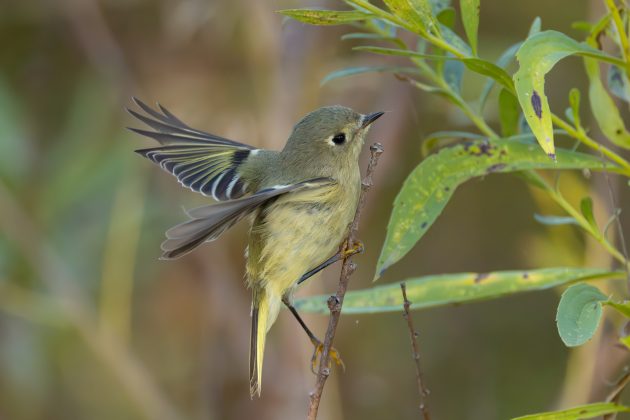
The following day started early again, up at 5:30am and on the road by 6:15am with a local fellow photographer who has a passion for photographing shorebirds. Destination McLaughlin Bay Wildlife Reserve, Oshawa Ontario. McLaughlin Bay Wildlife Reserve is a 108-acre natural area dedicated to preserving local wildlife habitats. Visitors can enjoy various activities such as hiking, birdwatching, kayaking, and fishing. The reserve has several well-maintained trails that take visitors through diverse landscapes, including forested areas, wetlands, and open meadows.
The reserve is known for its tranquil atmosphere and variety of wildlife, making it a popular destination for nature enthusiasts and photographers.
By 6:30 we had parked the car and was making our way along a grass trail to the lake shore. The dew covered grass quickly permeated my supposedly waterproof hiking boots and left me with soggy cold socks and shoes. But the excitement of what awaited ahead took my mind away from the uncomfortably wet boots.
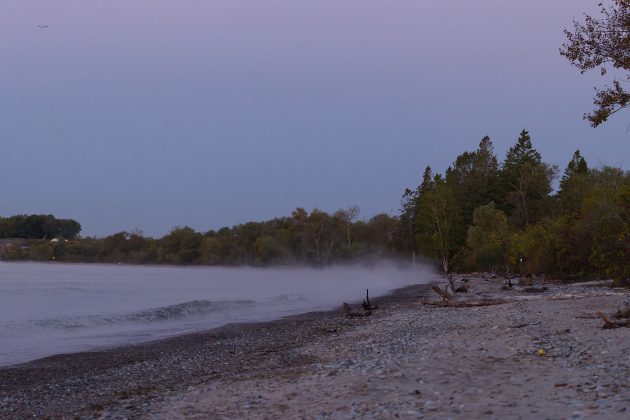
We soon arrived at the lake shore, a coyote or what we thought was a coyote made a hasty retreat into the bushes, a bit too close for my comfort. Once my nerves were calmed, we took a few moments to “soak in” the beauty of the early morning.
Returning our attention to the task at hand, we began scouring the shore with our telephoto lenses for signs of birdlife and sure enough, despite the low light, we spotted a couple of shorebirds wading in the shallow waters of the shoreline. We identified these as Dunlins. I had only seen a Dunlin once before and you can read about that encounter HERE.
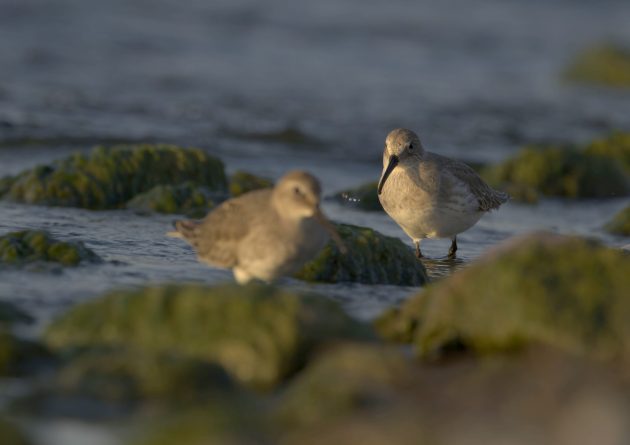
We moved a bit closer to the Dunlins, cautiously so as not to disturb them. Once we were close enough we quietly crouched down to observe their behavior before taking up positions to begin the photoshoot.
Wanting to get as low as possible I was lying flat on my stomach on the pebble covered shoreline for the best angle to capture the birds with the rising sun. The water was inches from my foot, but since my boots were already soaked, I had no fear of dunking them again.
The Dunlins went about their business feeding as the sun rose over the lake catching the highlights on the wet rocks.
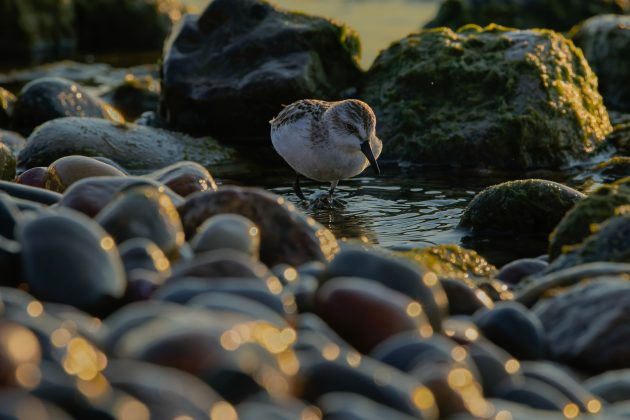
Soon the Dunlins began to take little notice of us as they approached closer and closer, in fact, at one point I was unable to focus my camera due to the proximity of these beautiful little birds, a blessing in disguise, as all I could do was to rest there on my stomach trying my best not to shift and to just enjoy this magical moment with this beautiful creature comfortably feeding just over a meter away.
We spent the better part of an enjoyable hour photographing and observing the antics of these two Dunlins, but alas… it was time to leave.
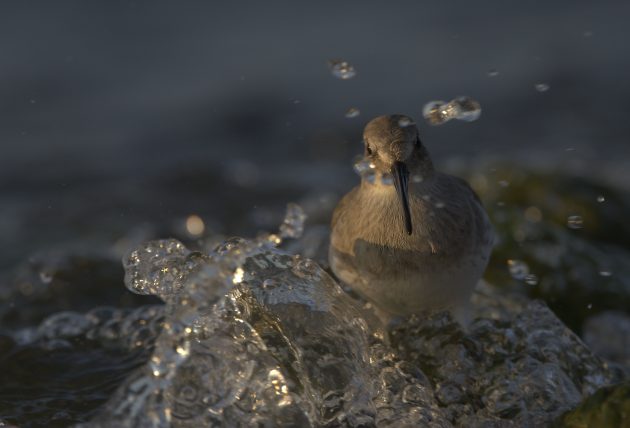
We quietly moved away from our position on the lake shore and made our way towards the McLaughlin Marsh to see what awaited there.
Approaching the Marsh an elderly early morning birder with scope and notebook greeted us and mentioned a lone Wilsons Snipe feeding on the edge of the Marsh a short distance ahead of us. I had not seen this bird before so another one for my lifers list. Though not uncommon in North America their well-camouflaged plumage, can make them difficult to spot.
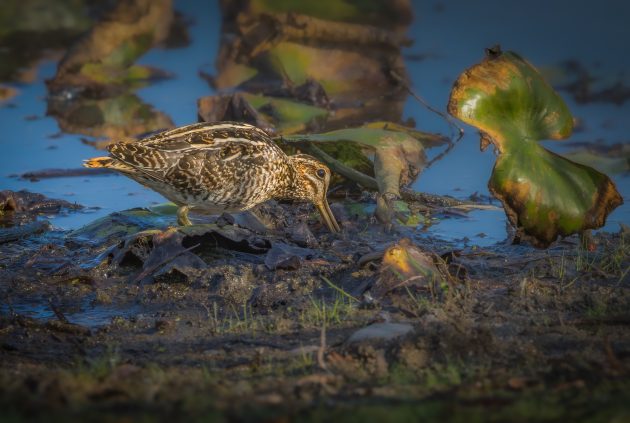
The Marsh also revealed to us the dainty and alert Lesser Yellowlegs foraging for its meal. In French, they are known as Petit chevalier, meaning “little knight,” likely referring to their graceful and slim appearance, as well as their dignified manner, reminiscent of the nobility associated with knights.
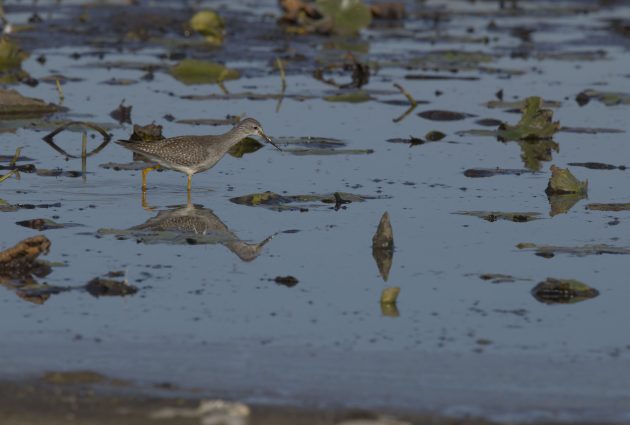
As we focused on capturing the elegant Lesser Yellowlegs foraging in the marsh, a Northern Harrier suddenly glided low over the wetlands. The sleek, long-tailed raptor, was a striking sight. Northern Harriers are known for their open-country hunting, often skimming low over grasslands and marshes in search of prey. At this time of year, McLaughlin Bay’s mix of marshland and grasslands provides an ideal habitat for them, as they migrate southward to escape the colder months of Canada, stopping in places like this to hunt for small mammals and birds in the dense vegetation below
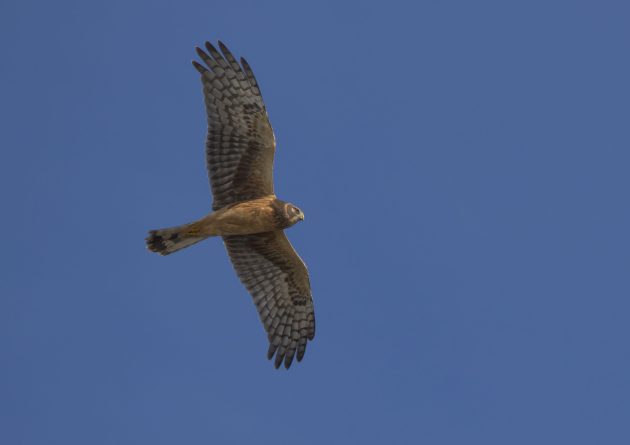
A bit further inside the Marsh was a couple of Sandhill Cranes. During the fall, Sandhill Cranes travel through places like McLaughlin Bay as they migrate southward to warmer climates. The marsh serves as an essential stopover point on their long journey, offering a place to rest and replenish their energy.
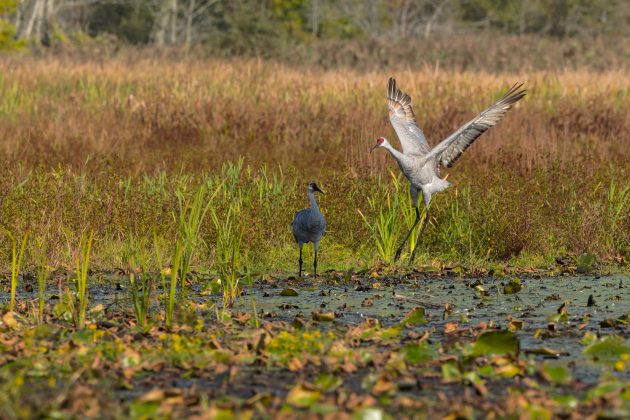
As we left the area and made our way back to the car, just off the trail we spotted the elegant looking Dark-eyed-Junco, a member of the Sparrow family, with its dark hood and contrasting pale belly, calmly resting on a leafless branch.
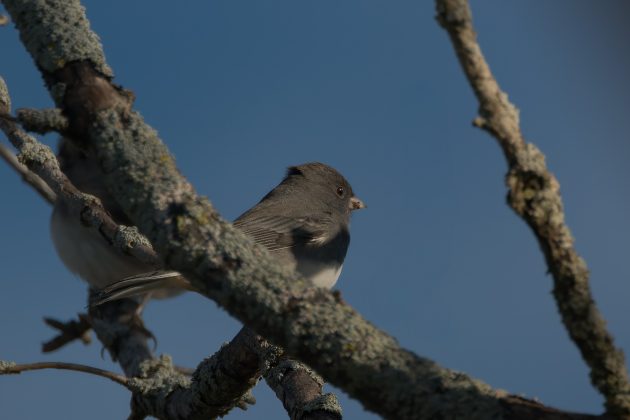
Birds were not the only creatures around, we also saw a couple of Deers just off the trail at Lynde Shores Conservation area.
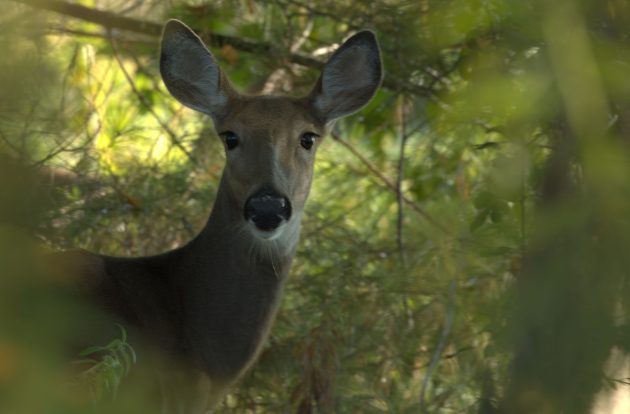
Squirrels, Chipmunks and Rabbits were all around competing with the birds for feed left at the various feed stations around the reserves.
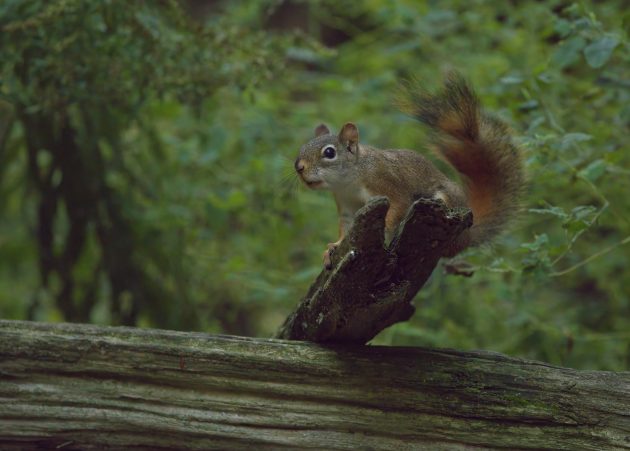
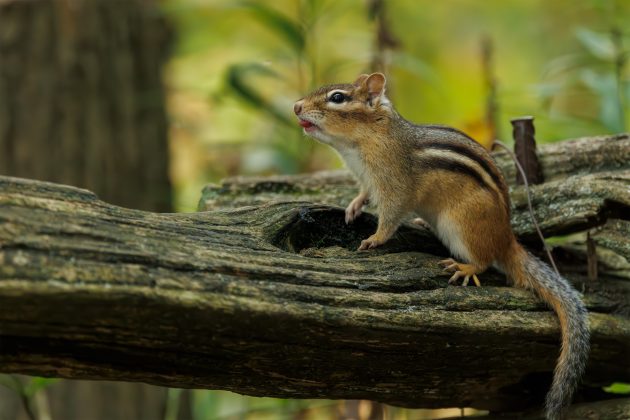
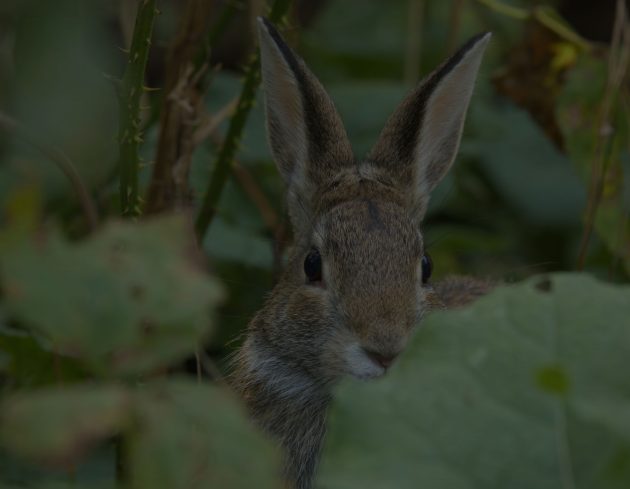
If you’ve read this far and still wondering why the title of this post is “Treasures of Ontario: Birding Made Simple…,” let me explain. During this short Ontario visit, we encountered an impressive variety of birds including Wild Turkeys (…from personal experience I can tell you that these need to be approached VERY cautiously), vibrant Cardinals, Black-capped Chickadees, Kinglets, Blue Jays, Red-winged Blackbirds, Nuthatches, Mourning Doves, Mallards, Canada Geese, Gulls, Woodpeckers, Sparrows and so many more. It was a birdwatcher’s dream, with no less than 15 lifers for me! What made it even better were the stunning, accessible urban wildlife reserves located less than an hour from downtown in some cases, places such as Samuel Smith Park, High Park, Tommy Thompson Park, McLaughlin Wildlife Reserve and Lynde Shores conservation area both in Oshawa, to name a few.
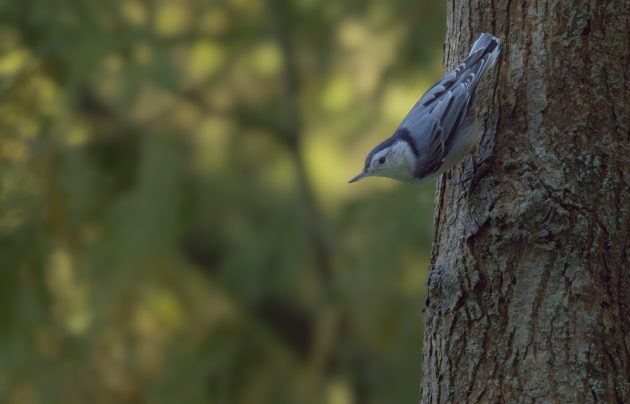
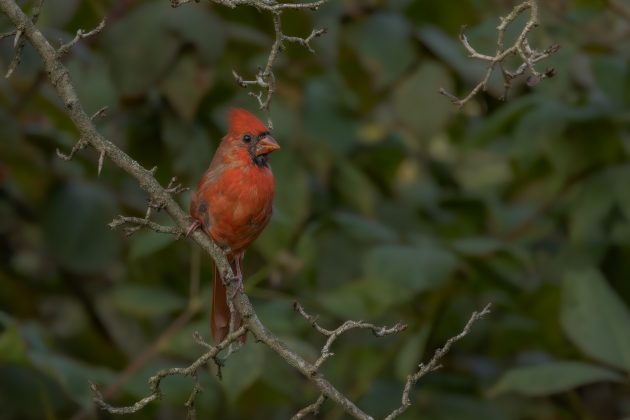
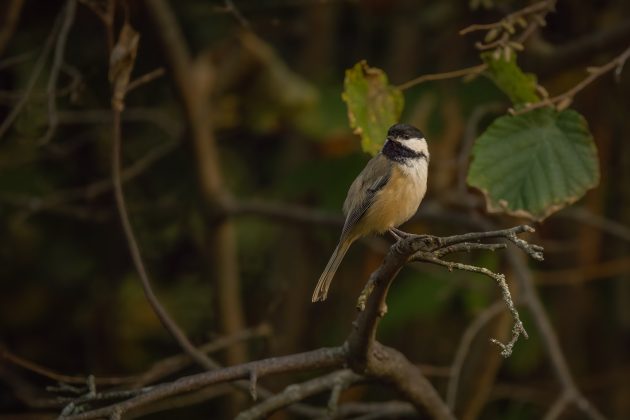
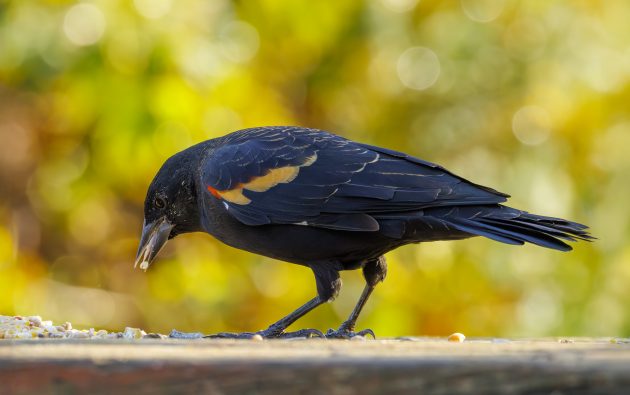
All of the location so purposely designed for families and nature lovers, providing easy access to trails and incredible abundance of wildlife. The time spent at each location was relaxing and rewarding but way too short, definitely deserves a return visit.
For Nature Lovers and Birders alike these are just a few of the Treasures of Ontario, places where you don’t have to look for birds, they are visible all around you and with a handful of birdseed they will literally eat out of your hands.







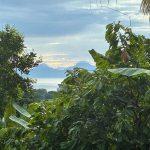
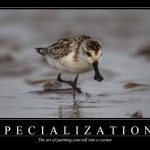




McLaughlin Bay is a great place, although I haven’t been there for years. Your photographs of the shorebirds are beautiful. Glad to hear you had so many lifers and enjoyed the birding locations. You just scratched the surface of the hot spots we have here in the Greater Toronto Area. Male Wild Turkeys can be aggressive. I enjoy them from a distance.